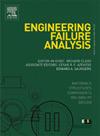大气塔顶系统中水油两相流腐蚀机理的数值和实验研究
IF 4.4
2区 工程技术
Q1 ENGINEERING, MECHANICAL
引用次数: 0
摘要
常压塔是原油精炼装置的主要组成部分,由于存在腐蚀失效的风险,因此是一个备受关注的重要领域。研究常压塔塔顶系统的腐蚀机理和风险防护对炼油厂的安全运行起着至关重要的作用。本文利用 Aspen 软件模拟了常压塔顶系统的水油两相工艺流程。根据模拟流的主要特征参数,设计了相应的流动腐蚀模拟实验。利用显微分析技术和 CFD 模拟方法分析了不同温度和冲击角条件下的实验结果。从物理化学方面揭示了氨盐和露点腐蚀环境下塔顶系统腐蚀失效的过程和机理。结果表明,在露点温度下腐蚀速率最高,但随着温度的降低,表面吸附和积累的腐蚀产物更难从表面去除,从而减缓了腐蚀速率。当冲击角从 0°增加到 60°时,表面流体冲击力和湍流强度的增加使腐蚀产物更容易被剥离,从而提高了腐蚀介质与表面之间的传质效率,加快了腐蚀速率。不同的相态和流动模式影响着表面腐蚀坑的形态。此外,随着撞击角从 0°增大,腐蚀坑的形态也从相对平坦的形态变为起伏较大的形态。研究结果揭示了炼油工业大气塔顶系统中发生的主要腐蚀类型的特征,为腐蚀风险防护方法提供了参考。本文章由计算机程序翻译,如有差异,请以英文原文为准。
Numerical and experimental study on corrosion mechanism of the water-oil two-phase flow in the atmospheric tower top system
The atmospheric tower is the main component of the crude oil refining units and is a critical area of concern due to the risk of corrosion failure. Research on the corrosion mechanism and risk protection of atmospheric tower top systems plays a vital role in the safe operation of refineries. In this paper, the water-oil two phase process flow of the atmospheric tower top system was simulated by Aspen software. A corresponding flow corrosion simulation experiment was designed according to the main characteristic parameters of the simulated stream. The experimental results under varying temperature and impact angle conditions were analyzed by using microanalysis technology and CFD simulation methods. The process and mechanism of corrosion failure of tower top system under ammonia salt and dew point corrosion environment are revealed in physicochemical aspects. The results show that the corrosion rate was highest at the dew point temperature, but as the temperature decreases, the corrosion products adsorbed and accumulated on the surface are more difficult to remove from the surface, which slows down the corrosion rate. When the impact angle increased from 0° to 60°, the increment of the surface fluid impact force and turbulence intensity makes the corrosion products easier to be stripped off, which enhances the mass transfer efficiency between the corrosive medium and the surface to accelerate the corrosion rate. Different phase states and flow modes affected the morphology of corrosion pits on the surface. The depth and size of the pits in only water phase corrosion were larger than those in the two-phase flow corrosion, Additionally, as the impact angle increased from 0°, the morphology of pits changes from a relatively flat pattern to a more undulating shape. The research results reveal the characteristics of the main corrosion types occurring in the atmospheric tower top system of the oil refining industry, and provide a reference for corrosion risk protection methods.
求助全文
通过发布文献求助,成功后即可免费获取论文全文。
去求助
来源期刊

Engineering Failure Analysis
工程技术-材料科学:表征与测试
CiteScore
7.70
自引率
20.00%
发文量
956
审稿时长
47 days
期刊介绍:
Engineering Failure Analysis publishes research papers describing the analysis of engineering failures and related studies.
Papers relating to the structure, properties and behaviour of engineering materials are encouraged, particularly those which also involve the detailed application of materials parameters to problems in engineering structures, components and design. In addition to the area of materials engineering, the interacting fields of mechanical, manufacturing, aeronautical, civil, chemical, corrosion and design engineering are considered relevant. Activity should be directed at analysing engineering failures and carrying out research to help reduce the incidences of failures and to extend the operating horizons of engineering materials.
Emphasis is placed on the mechanical properties of materials and their behaviour when influenced by structure, process and environment. Metallic, polymeric, ceramic and natural materials are all included and the application of these materials to real engineering situations should be emphasised. The use of a case-study based approach is also encouraged.
Engineering Failure Analysis provides essential reference material and critical feedback into the design process thereby contributing to the prevention of engineering failures in the future. All submissions will be subject to peer review from leading experts in the field.
 求助内容:
求助内容: 应助结果提醒方式:
应助结果提醒方式:


